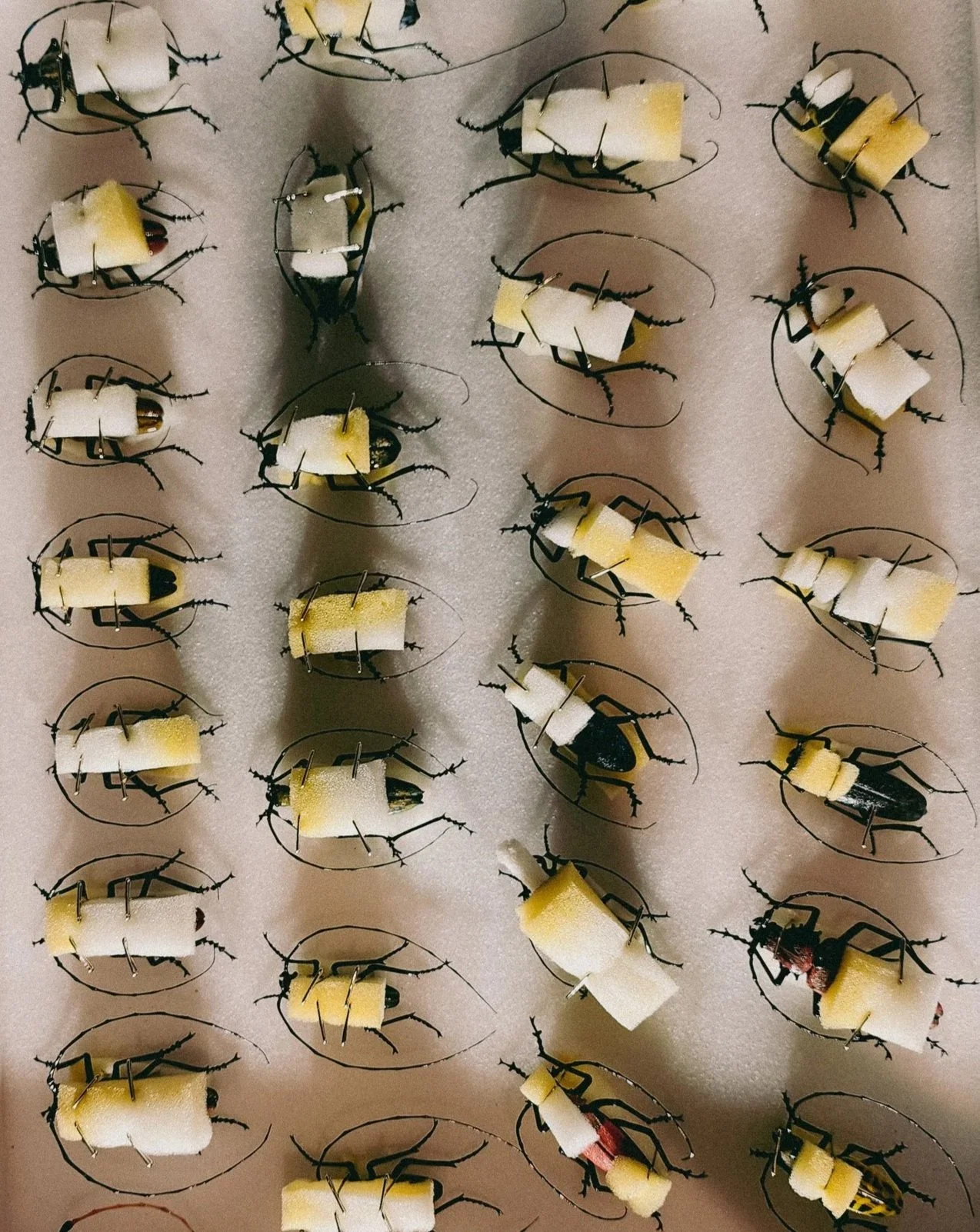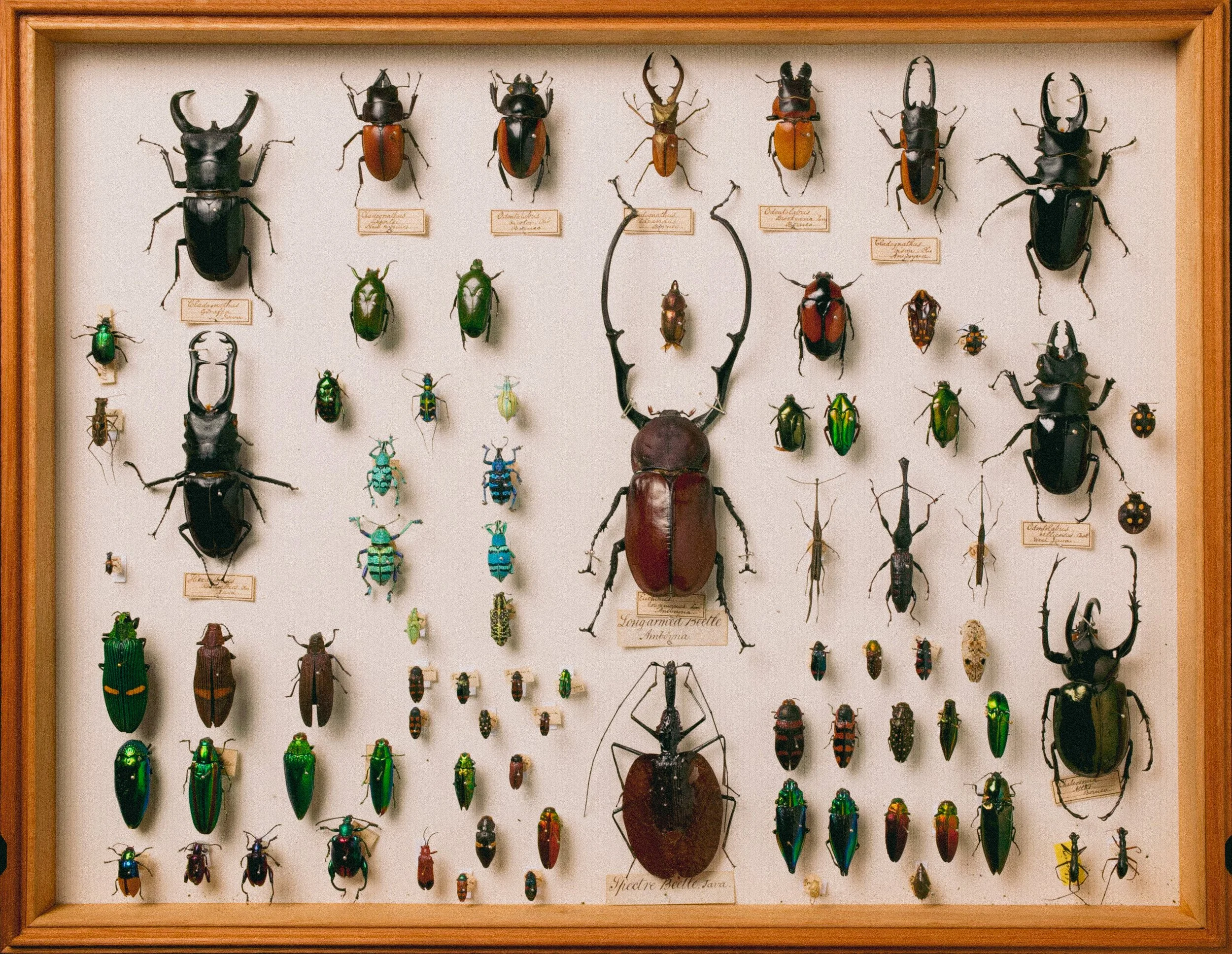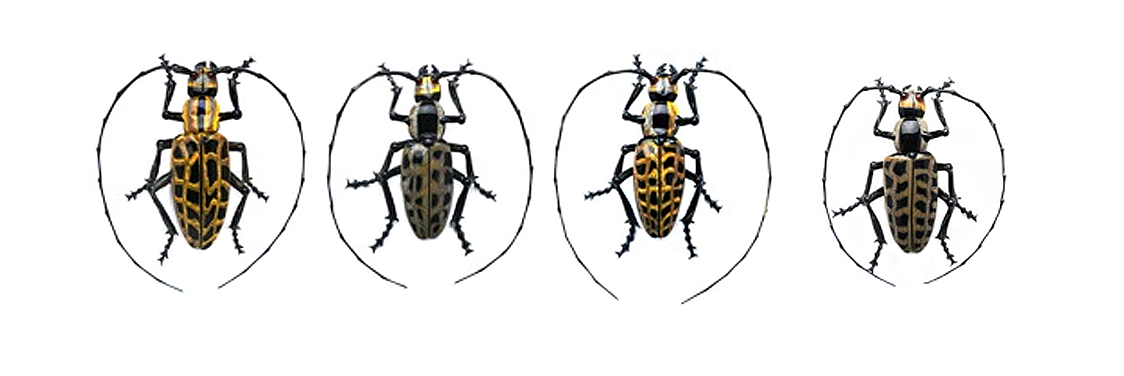Caring for Costantini's Bugs
If you have visited the Museum of Glass exhibition Field Notes: Artists Observe Nature, the first pieces you encountered were Vittorio Costantini’s flameworked glass insects, Entomological Specimens. These masterpieces were meticulously crafted to be as entomologically accurate as possible – so much so that the installation rivals an arthropod collection at a natural history museum. You may also have noticed that, due to the likeness of the pieces to their living counterparts, they are quite fragile. Ultrathin antennae. Delicate legs. Sometimes the smaller a work of glass, the more difficult it is to handle. How did the Museum of Glass Curatorial Team do it?
The Museum borrowed nearly 240 of Costantini’s flameworked insects from The George R. Stroemple Collection to create the installation. The bugs made the journey from Oregon to Tacoma in trays packed by freelance art handler William Rihel. (We should also mention the many trips Field Notes curator Linda Tesner took to visit Costantini in Italy in order to hand-deliver the bugs to the United States.) Each bug was cushioned with customized bits of foam, which secured the body of the bug while avoiding the delicate feet and antennae. The foam was locked in with a set of metal T-pins, much like their real-life counterparts in entomological specimen collections.
The collector also sent along an antique library cabinet to enhance the display of the insects. Once the cabinet was put in place and the team readied themselves to place the tiny creatures inside, they found, to their dismay, that the cabinet was locked and no key could be found. After unsuccessfully trying more then 100 skeleton keys loaned by a local locksmith, the cabinet was moved to the locksmith’s shop where they were able to craft a new set of keys, and the job of installing the bugs could finally begin.
Once the Museum installation crew was finally into the library cabinets, they approached the project with quiet precision and judiciousness, being mindful that they would have to remember how to put the bugs back in their boxes for the journey home. They decided to forgo their usual nitrile gloves, making sure that nothing could snag onto the tiniest features. Given the scientific accuracy employed by Costantini, they used images of entomological specimen displays from museums around the world as inspiration, keeping examples from the various orders grouped together.
Real bug display!
Now that Field Notes is open, Costantini’s intricate insects have been an unexpected hit, becoming must-see works for every Museum of Glass visitor. Behind the scenes, installations like this demand tremendous care from our Curatorial Department, but the joy and curiosity they spark in our guests make it all incredibly worthwhile.




While the installation process is complete, the Curatorial documentation of these pieces continues through digital documentation and cataloging. We caught up with Curatorial Assistant Amanda Brebner to learn more about the ongoing behind-the-scenes work of Entomological Specimens.
Describe your work with Costantini’s bugs in Field Notes.
Amanda Brebner: A large portion of what I do is manage the photos in our digital collection—taking photographs of objects, working with artists and institutions to get images from exterior sources, and handling rights and reproductions requests. During our conversations about exhibition labels for Field Notes, we decided that it would be nice for there to be a finding guide for the bugs, because there were simply too many for our typical wall labels. Finding guides are something we have done in the past for groupings of objects, most notably a couple of paperweight cases and a shelf of goblets from Boundless Curiosity: A Journey with Robert Minkoff. Visitors have responded well to these.
After the bugs were installed by my colleagues, it was my time to get to work. Initially, I considered a text-only finding guide, but the nonlinear composition of many of the bugs made that difficult. Following some other considerations, I landed on simply using the case layout and numbering the bugs. Shadows and light spots distorted some of the bugs enough that I knew I couldn’t just use a photo of the layout in the case to make the guide, so I turned it into a template.
I used a photo of each of the bugs (most were provided by the collector), cleaned up some of the backgrounds, and digitally placed them on their spot in the case. Each bug has a corresponding number for record-keeping purposes, which became very important when we found some mystery bugs.
What was the goal of the cataloging process, since these objects are not part of our collection? How did that goal shift when you discovered that there were some “mystery bugs?”
AB: The goal for making the finding guide was not to catalog the bugs themselves, but to make them easier to identify for Museum guests. We were given a list of bugs that were part of an exhibition at another museum, and that served as a primary source for information. It was what I initially used to make our finding guide. As I went through the process of matching the bugs on this list to their counterparts in the case, I found that we had received 25 additional bugs. There are two important reasons why we needed to identify these mystery bugs: the finding guide and paperwork.
Even if objects are not part of our collection, we still need to have an accurate record of objects being held and exhibited in the Museum. So, we reached out to the collector to them know that we received these additional bugs, and they, in turn, sent us a more comprehensive list. Using the new list, I was able to match the mystery bugs and fill in the missing information.
What was the photography process like? What would you like readers to know about photographing glass objects, especially tiny, intricate ones like these guys?
AB: The photography process for the bugs was different than my normal process. In our storage space, we have a photo station set up with a sweep and a fabric box used to diffuse our florescent lights. This space works for most of our collection. Because these little bugs are so delicate, it was decided that I would just photograph them in their case, to limit the number of times we had to move them. The problem with photographing glass in that kind of environment is the lighting. Reflections are tough, whether it is light or a reflection of someone or something. Light reflections can be quite noticeable on small objects. I did my best to block some of the light with a piece of matboard, but, in the end, the best way to fix some of those issues is some minor digital manipulation.
Can you share a bit about working with separate bugs that were very similar to each other?
AB: When it came to bugs that were similar to one another, it was all about the little details that make each one unique: the ways legs and antennae bend, any extra parts on legs as well as their size and shape, how similar markings might have subtle differences in spacing or size, and variations in color. See if you can find the differences!
Field Notes: Artist Observe Nature is on view throughout 2025.







